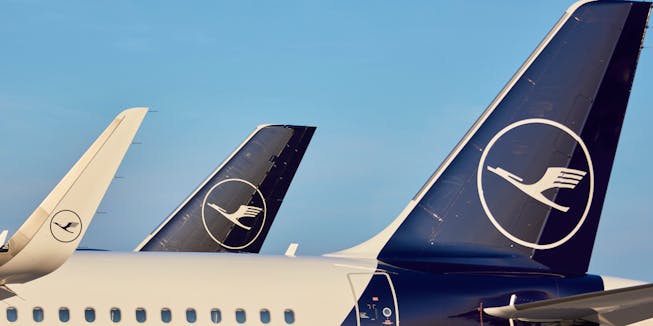Lufthansa, Austrian and Swiss
How Artificial Intelligence is helping Lufthansa to avoid disruptions
Lufthansa Group is working with Google to better deal with delays and cancellations. Five questions and answers about the project.

Jets von Lufthansa: Welcher ist wann und wo verfügbar?

Jets von Lufthansa: Welcher ist wann und wo verfügbar?
Delays and cancellations are not only annoying for passengers. They also cost airlines a lot of money. They sometimes have to provide replacement crews and pay compensation to passengers. That is why the industry does a lot to prevent such disruptions in operations. Lufthansa is now also relying on artificial intelligence.
The aviation group has started a collaboration with Google. It will use the tech giant’s cloud solution. It combines Lufthansa airlines’ information sources with a learning computer system.
But what exactly does that mean? Five questions and answers:
What is it all about?
If a flight is delayed so that passengers cannot reach their connecting flights, they must be rebooked. Until now, this has been done by experts from Lufthansa airlines, who have been collecting a variety of data, such as weather, aircraft maintenance, crew planning and much more. They will continue to do so in the future. With one difference: the data now flows into the system supplemented with artificial intelligence, which Lufthansa is setting up with the help of the Google Cloud.
On the basis of all the information available, the system generates recommendations for the experts, for example for rebooking or early information to the passengers concerned. And it learns something more each time it does so. The aviation group hopes that this will reduce the impact of delays on passengers and enable the airlines to return to a stable flight schedule more quickly.
Will the machine decide instead of the human being?
No, Lufthansa is only allowing the AI to make recommendations. On the basis of these recommendations, the employees will then make the decision. “The final decision-making authority will always be the human being,” a Lufthansa spokeswoman explained to aeroTELEGRAPH. The employees will also have access to each individual data source as before. Should they ever disagree with the computer’s recommendations, they can continue to form their own opinion.
How many employees are involved?
The 24 hours of a day are covered in a three-shift operation. At Swiss there are about 40 employees per shift, at Lufthansa in Frankfurt about 80, at Lufthansa in Munich about 50. During the night shifts there are slightly fewer employees on site.
Where and when does it all start?
It starts with Swiss in Zurich. According to the spokeswoman, the Swiss subsidiary was chosen “for technological reasons”. Starting in February, a joint team consisting of operational experts, developers and engineers from the aviation group and software engineers from Google Cloud will develop and test the platform. It is not yet known when the system will go live for the first time. If it is a success at Swiss, Lufthansa and Austrian Airlines will follow. For Eurowings, there are no plans for a conversion yet.
Are the Lufthansa airlines the first to rely on such a system?
No. Air Asia announced in 2018 that it would use Google Clouds artificial intelligence not only to improve demand forecasting and marketing, but also to make operations more efficient by using crew, weather and maintenance data. KLM, in collaboration with the consulting firm, has also introduced an artificial intelligence system that does the same thing that Lufthansa is now looking to do. The German group also took inspiration from this.
